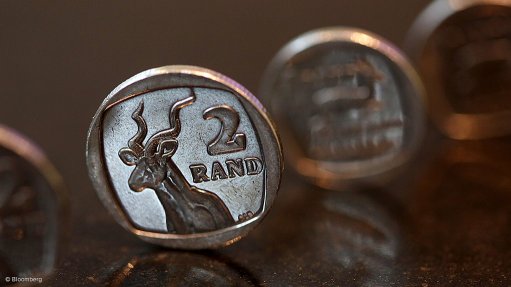Calls intensify for audit of South African tailings dams after Jagersfontein disaster

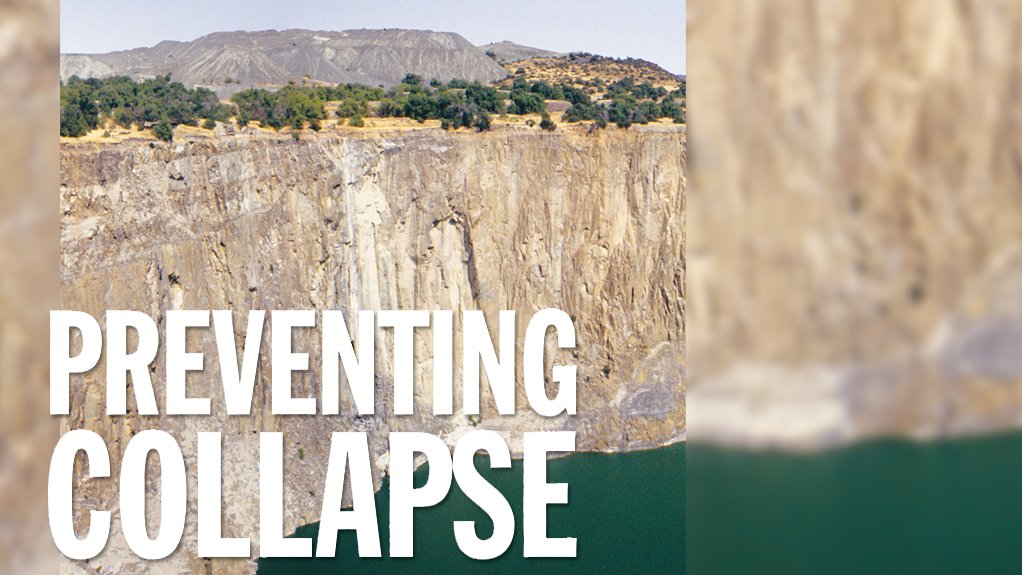
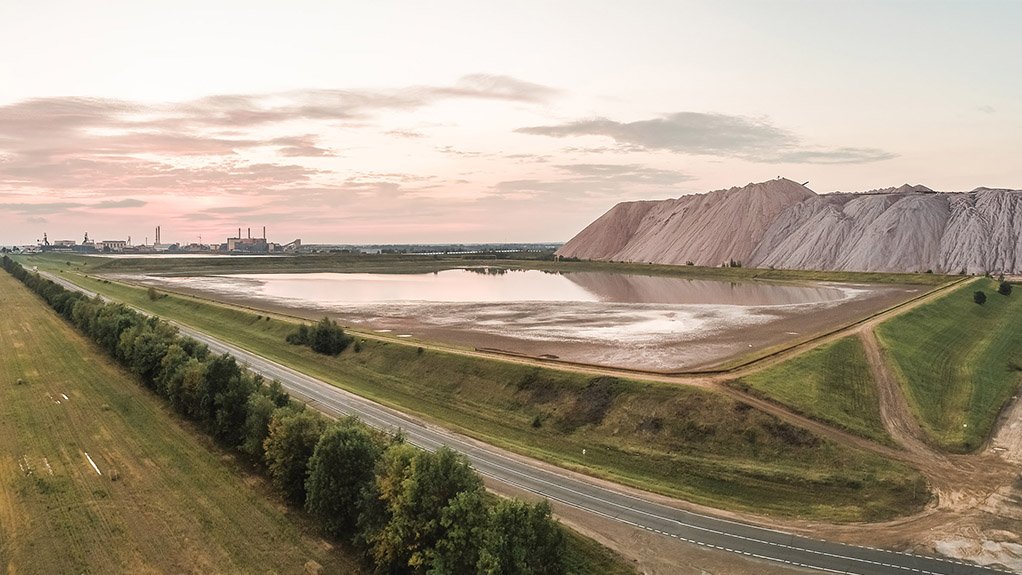
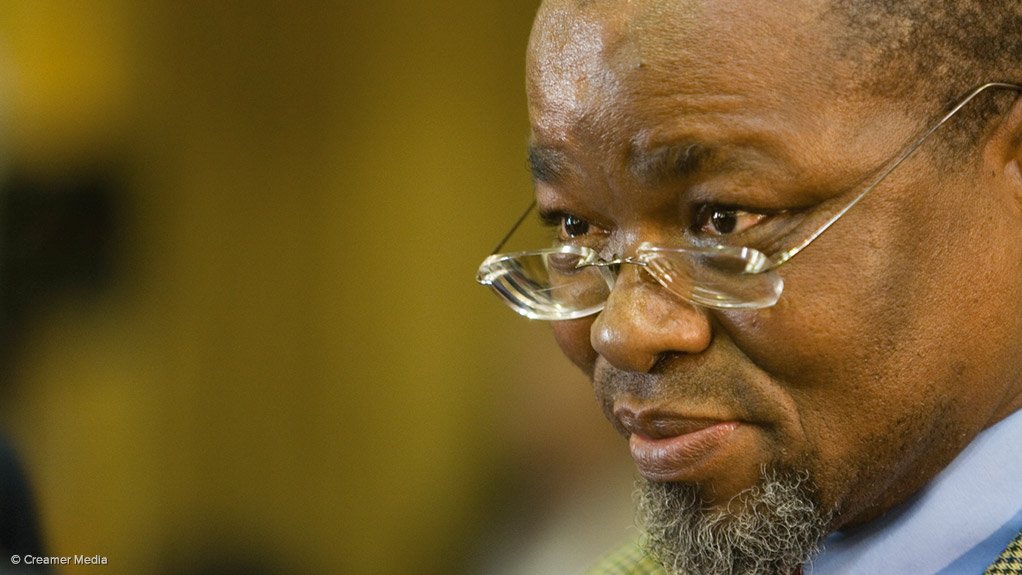
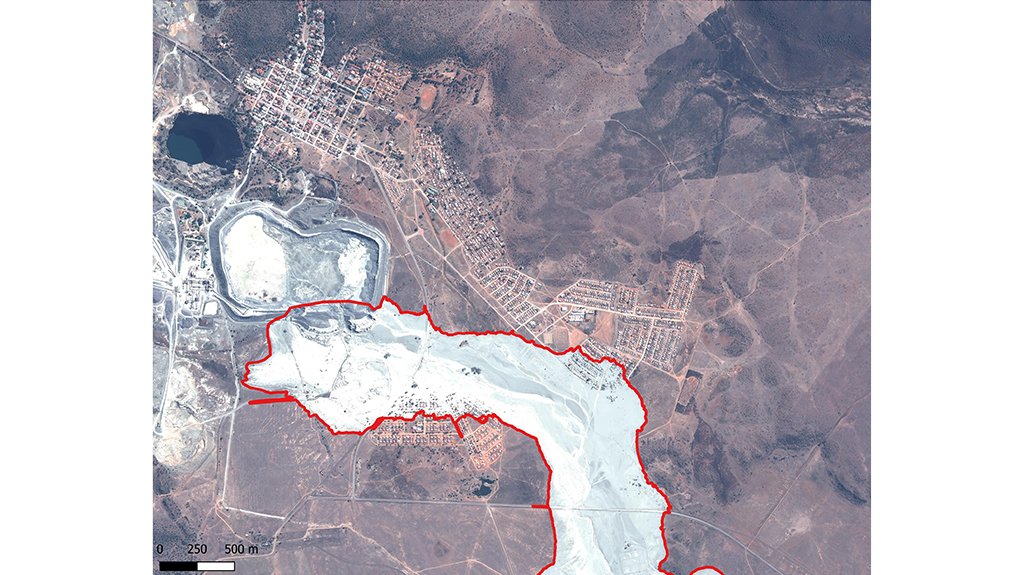
TECHNOLOGICAL SOLUTIONS Satellite imagery has been explored as a viable way of locating all the TSFs that have not been made known through reporting and the collection of documentation
Photo by Adobe
GWEDE MANTASHE The Mineral Resources and Energy Minister has been called upon to conduct a survey of all South Africa's taiings storage facilities
Photo by Creamer Media
DAMAGE DONE Satellite images show the Jagersfontein TSF and the extent of the damage caused by its collapse
Photo by Airbus
Following the tragic collapse of the Jagersfontein tailings storage facility (TSF) in the Free State on September 11, there has been a resurgence of urgent calls for audits of South Africa’s other TSFs.
The collapse of the Jagersfontein TSF claimed one human life and nearly 900 farm animals belonging to at least 25 farmers, while destroying more than 50 houses, ruining water supplies and crops, and displacing nearly 400 people.
Speaking at the Mine Occupational Health and Safety Tripartite Summit, hosted by the Mine Health and Safety Council in Midrand, Gauteng, on October 13, organised labour stakeholder advocate Hanlie van Vuuren called on Mineral Resources and Energy Minister Gwede Mantashe – who also attended the event – to conduct an urgent and immediate survey of all TSFs in the country.
Mantashe responded by voicing his concerns about the safety of the country’s TSFs, singling out the Free State as having many more TSFs that were akin to the Jagersfontein one and, therefore, posed a similar threat.
He implied that there was a general lack of proper qualifications among those who managed TSFs in South Africa, saying that these employees were qualified in mining, and not in water management.
“The burst of the tailings dam in Jagersfontein is a reminder of the dangers posed to the lives of mining communities by operations that fall outside the Mine Health and Safety Inspectorate. It is a painful lesson on the harm of mine legacy projects,” Mantashe said.
He singled out those in the private sector who were responsible for such disasters, stating that, even though companies exploited loopholes in the regulations by winning cases against the DMRE to sidestep accountability, in the court of public opinion, inside the affected communities, they would be “forever guilty”.
The Jagersfontein collapse is the latest in a series of TSF collapses globally this year, with the previous TSF collapse in South Africa having occurred in December last year at mining investment company Menar’s Zululand Anthracite Colliery, in KwaZulu- Natal.
At the colliery, a slurry dam collapsed, resulting in liquid coal waste pouring into the Black Umfolozi and White Umfolozi river systems, flowing through rural communities and the Hluhluwe-iMfolozi and iSimangaliso wildlife reserves.
While these events have once again highlighted the growing concern about the impact of TSFs on the health of people and animals, as well as the broader environment being exposed to toxic and acidic waste, concerns regarding the preservation of heritage sites have also arisen in the case of Jagersfontein.
Heritage Versus Storage
When the South African Heritage Resources Agency (SAHRA) and the Department of Water and Sanitation (DWS) granted Jagersfontein Developments – the company reprocessing old tailings around the disused pit to recover diamonds – permission to backfill the Jagersfontein pit following the TSF collapse, Youssef Diamonds Liberia chief geologist and Florida International University earth and environmental sciences research professor Stephen Haggarty, a previous owner of the Jagersfontein farm, wrote an open letter to the SAHRA decrying the decision.
However, other industry voices, such as independent geologist Bill McKechnie, responded by saying that the value of the pit as a heritage site is limited when contrasted with the need to store the tailings from the operation in a safer manner.
The Jagersfontein diamond mine is one of South Africa’s oldest mines, possibly the first commercial mine in the country, and features a large hand-dug hole to rival the Big Hole in Kimberley, in the Northern Cape.
However, while Kimberley’s Big Hole has benefited from ongoing support from mining company De Beers to maintain the site as a tourist attraction, Jagersfontein has had no such support.
Global Diamond Network director Dr John Bristow agreed with McKechnie at the time of the SAHRA and DWS decision, saying that the preservation of a heritage site was a luxury that South Africa could not afford in light of the urgency and seriousness of the Jagersfontein collapse.
Rather, energy should be focused on finding ways to prevent such incidents, he added.
South Africa’s TSF collapses have highlighted the need for better monitoring and perhaps increased oversight. However, while these might be the most recent, they have not been as serious as some other collapses that have continued to occur worldwide with increasing frequency and severity.
A research paper published in 2015 states that an analysis of global TSF failures over the past 100 years showed an emerging, yet notable, trend towards a higher incidence of serious and very serious incidents, stating that the “consequence of loss is becoming increasingly greater”.
With the number of fatal and ecologically destructive collapses occurring globally increasing every year, the clamour for improved TSF safety rose sharply in January 2019, when an iron-ore TSF – owned by iron-ore miner Vale – collapsed at the Córrego do Feijão iron-ore mine, in Brumadinho, Brazil, killing as many as 270 people and causing significant damage to property and the environment.
Considered to be one of the worst TSF collapses ever, and one of the overall worst mining-related disasters, it resulted in the release of about 12.1 m3 of tailings into the environment.
The tailings devastated the Córrego do Feijão brook and reached the adjacent Paraopeba river, the region’s main watercourse and a major tributary of the São Francisco basin, destroying homes, farms and businesses along the way.
While there is no indication from the DMRE or the DWS that an audit of South Africa’s TSFs will be carried out, efforts are being made to address this issue on a global scale.
Global Solution
Following the incident at Brumadinho, Investor Mining and Tailings Safety Initiative chair and Church of England Pensions Board chief responsible investment officer Adam Matthews worked to convene industry investors, including experts from the academic, public and private sectors, to investigate ways of addressing the pressing concerns around TSF safety.
“It was astonishing to find that there is no global record of tailings facilities. We didn’t know which companies had tailings facilities and what level of risk each facility had. None of that information was there,” Matthews says.
While progress has been made since 2019, when investors worked with companies through the International Council on Mining and Metals and with the United Nations Environment Programme to develop a Global Industry Standard on Tailings Management, Matthews says that recent TSF collapses, such as the one at Jagersfontein, indicate that more still needs to be done.
While the standard is now being adopted by the largest mining companies worldwide, a remaining concern lingers surrounding those TSFs where the ownership is ill-defined and, therefore, whose responsibility it is to maintain them.
Matthews says a database of all TSFs globally has to be established.
Most companies, particularly publicly listed companies, made every effort to be transparent about their TSFs; however, many facilities owned by private entities remain unaccounted for, their ownership obscured by the changing of hands over time and, in some cases, poor record-keeping.
To overcome this problem, he says that satellite imagery has been explored as a viable way of locating all the TSFs that have not been made known through reporting and the collection of documentation. Using such imagery could be successful because of the uniquely identifiable signature of TSFs.
After compiling a comprehensive repository, Matthews says the aim is then to establish which of those facilities are at risk to allow for monitoring and rehabilitation, where needed.
He says a satellite-based global monitoring system can be operated using ground sensors, wherever possible, to independently monitor the highest-risk TSFs, whether publicly or privately owned.
“Where there’s clear ownership structures, you can address those entities, but where there isn’t clear ownership, or facilities are in countries where there are challenges in terms of being able to address a high-risk tailings facility, it becomes more complicated to deal with.”
Work is under way to conclude an agreement between the United Nations and institutional investors on the creation of an independent Global Institute on Tailings Management, adds Matthews.
It is to this end that institutional investors have invited mining company CEOs, government Ministers from major mining nations and other key stakeholders to a global tailings summit in London, in the UK, on January 24. The aim is to put these proposals to key stakeholders to get the proposals off the ground.
A key part of this is the global tailings legacy rehabilitation fund, which Matthews says is proposed as a dedicated means of funding interventions at the highest risk and the most dangerous orphaned tailings dams, where owner responsibilities cannot be clearly identified or where there is not enough existing funding to address the problem.
The details of the fund will also be discussed at the summit in January.
Article Enquiry
Email Article
Save Article
Feedback
To advertise email advertising@creamermedia.co.za or click here
Comments
Press Office
Announcements
What's On
Subscribe to improve your user experience...
Option 1 (equivalent of R125 a month):
Receive a weekly copy of Creamer Media's Engineering News & Mining Weekly magazine
(print copy for those in South Africa and e-magazine for those outside of South Africa)
Receive daily email newsletters
Access to full search results
Access archive of magazine back copies
Access to Projects in Progress
Access to ONE Research Report of your choice in PDF format
Option 2 (equivalent of R375 a month):
All benefits from Option 1
PLUS
Access to Creamer Media's Research Channel Africa for ALL Research Reports, in PDF format, on various industrial and mining sectors
including Electricity; Water; Energy Transition; Hydrogen; Roads, Rail and Ports; Coal; Gold; Platinum; Battery Metals; etc.
Already a subscriber?
Forgotten your password?
Receive weekly copy of Creamer Media's Engineering News & Mining Weekly magazine (print copy for those in South Africa and e-magazine for those outside of South Africa)
➕
Recieve daily email newsletters
➕
Access to full search results
➕
Access archive of magazine back copies
➕
Access to Projects in Progress
➕
Access to ONE Research Report of your choice in PDF format
RESEARCH CHANNEL AFRICA
R4500 (equivalent of R375 a month)
SUBSCRIBEAll benefits from Option 1
➕
Access to Creamer Media's Research Channel Africa for ALL Research Reports on various industrial and mining sectors, in PDF format, including on:
Electricity
➕
Water
➕
Energy Transition
➕
Hydrogen
➕
Roads, Rail and Ports
➕
Coal
➕
Gold
➕
Platinum
➕
Battery Metals
➕
etc.
Receive all benefits from Option 1 or Option 2 delivered to numerous people at your company
➕
Multiple User names and Passwords for simultaneous log-ins
➕
Intranet integration access to all in your organisation














